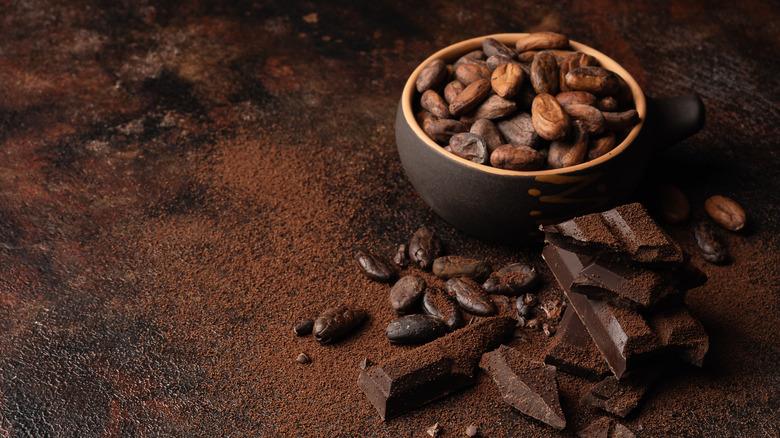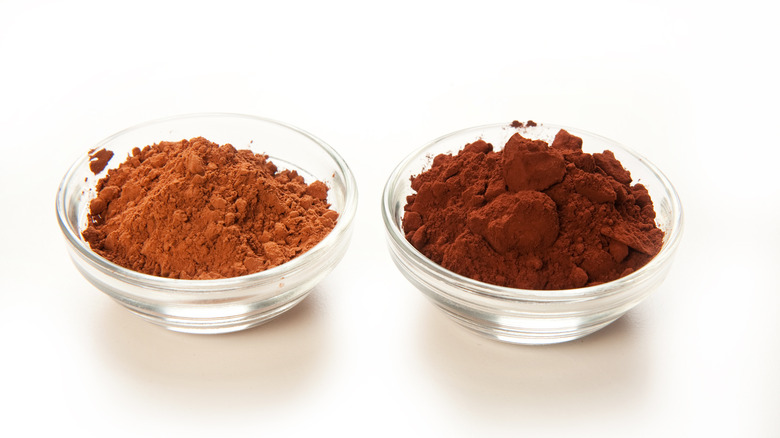What's The Difference Between Dutch Cocoa And Natural Cocoa?
Cocoa powder is delicious and versatile – the main ingredient in fudgy brownies, ultra-moist chocolate cakes, and mugs of hot cocoa on a blustery day. It's also useful in savory applications, perhaps a cocoa-rubbed steak or a chocolate mole, or to add a new depth of flavor to a pot of chili. It's ubiquitous now, but the chocolate was a luxury from Central America brought to the European courts in the 16th century by friars and conquistadors to impress their royal backers. Approved as a source of nutrition during Catholic fasting days, per Cocoa Runners, it morphed into a symbol of largesse and luxury due to the expensive and lengthy journey from Central America, which was only affordable to the upper classes.
To keep up with demand, European countries established colonies and plantations in chocolate-rich countries, according to History. Chocolate was made available to the masses after the 1828 invention of the cocoa press, which pressed fermented and roasted cacao beans to remove the cocoa butter. What was left behind was pulverized into cocoa powder, which was easier to mix into sweet treats. Industrialization of the process made cocoa cheaper and more widely available to the masses.
Per the International Cocoa Organization, the process of cocoa powder involves fermenting, drying, and roasting the cocoa beans before separating the nib from the shell. The next step is where cocoa can go on to remain natural cocoa powder or become Dutch-processed cocoa.
Natural and Dutch cocoa recipes will use different leaveners
Natural cocoa is the result of separating the solids and cocoa butter from pressed cocoa beans. The solids are dried and ground into cocoa powder. Dutch-processed cocoa, or European cocoa, adds a step called alkalization, which removes cocoa's natural acidity by washing the cocoa beans with alkali salts. The results are a darker cocoa powder, sometimes light red or even black, per the International Cocoa Organization. Natural cocoa has a bright citrusy flavor, and your cake or brownies will be lighter in color. Dutch cocoa has a deeper, smoother flavor profile and will result in darker baked goods.
The majority of recipes call for cocoa, which is your run-of-the-mill Hershey's natural cocoa powder. According to King Arthur Baking, while it is generally understood that they're interchangeable, the way Dutch cocoa interacts with leaveners like baking powder or baking soda means you need to be aware of how they differ. The next time you pull out your favorite chocolate cake recipe, take a look at the ingredients. A recipe using natural cocoa will most likely require baking soda as a leavener; natural cocoa is acidic, and when combined with the base pH of baking soda, the bubbles will raise your cake. Chemistry, right? Dutch-process cocoa recipes will use baking powder due to its more neutral state.
So if you only have Dutch cocoa on hand, just know that the color and possibly the texture of your final product might not be what you expected.

